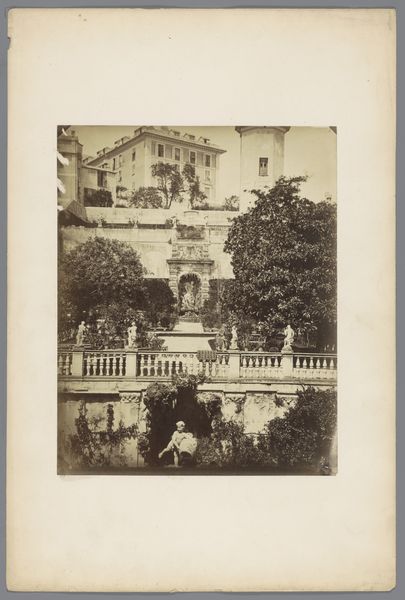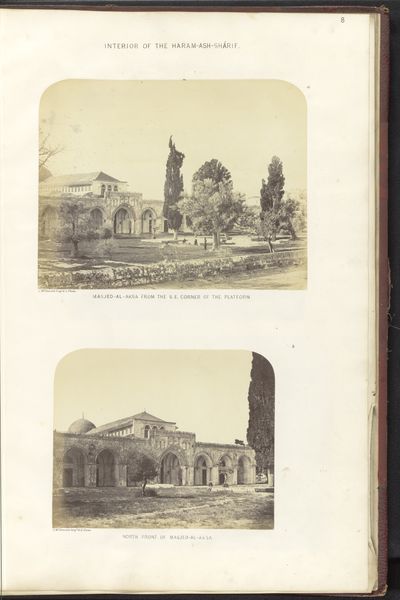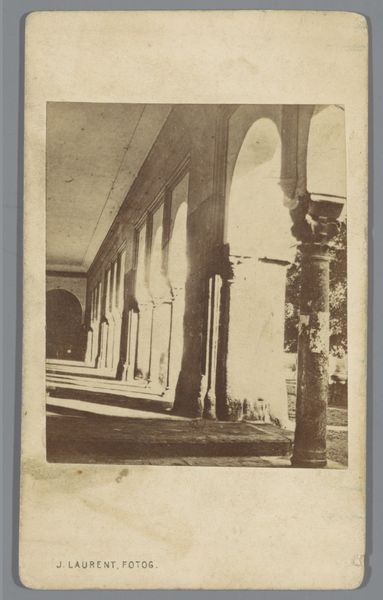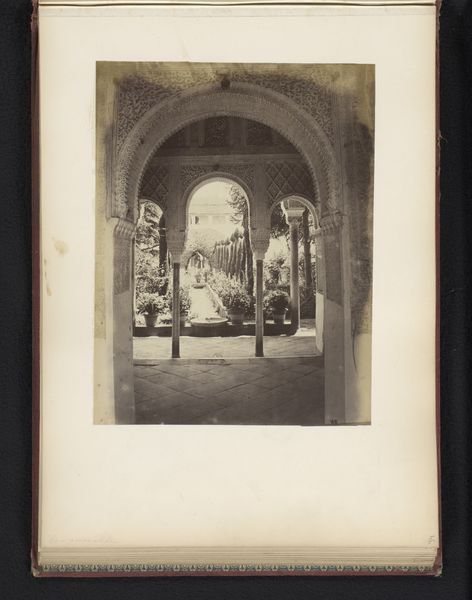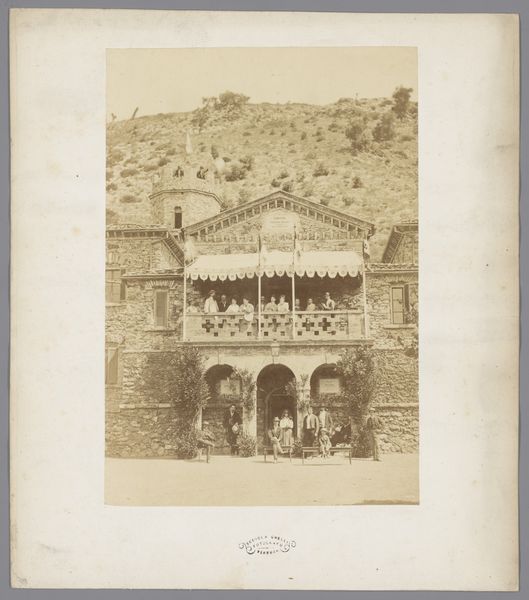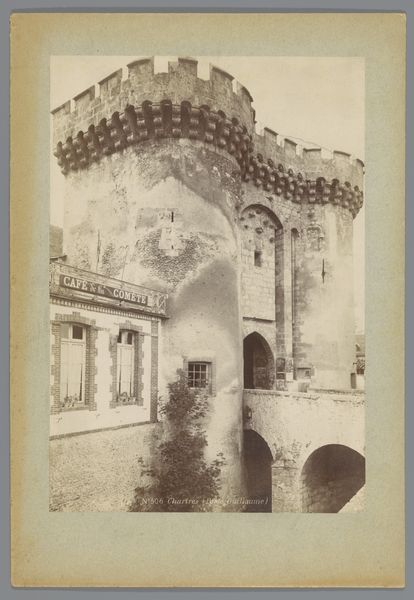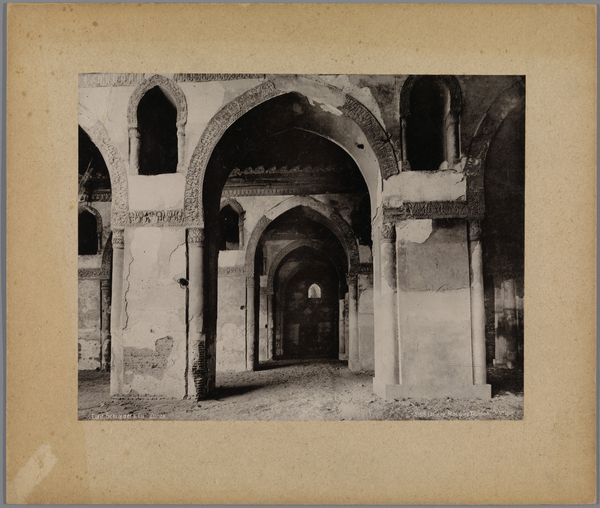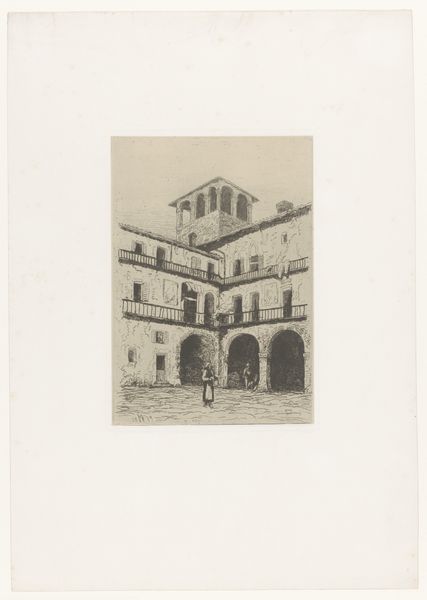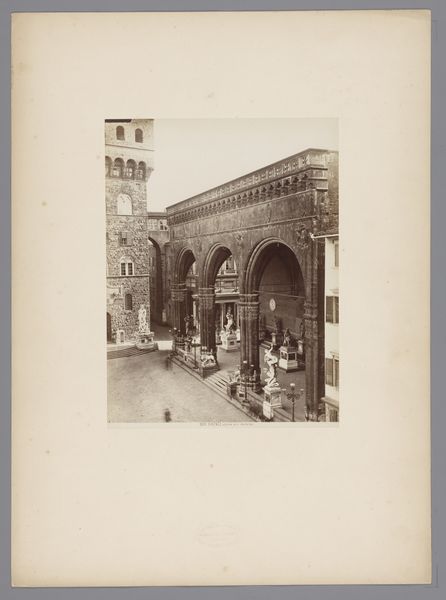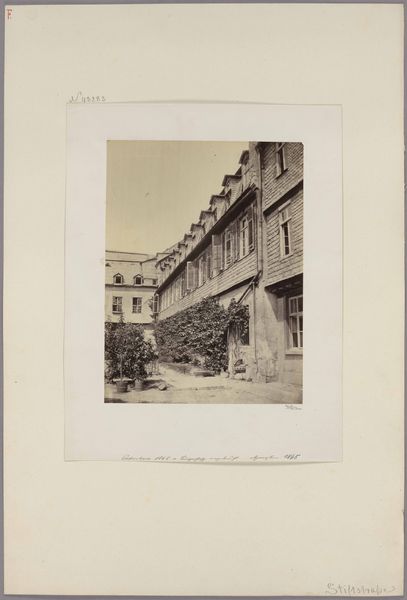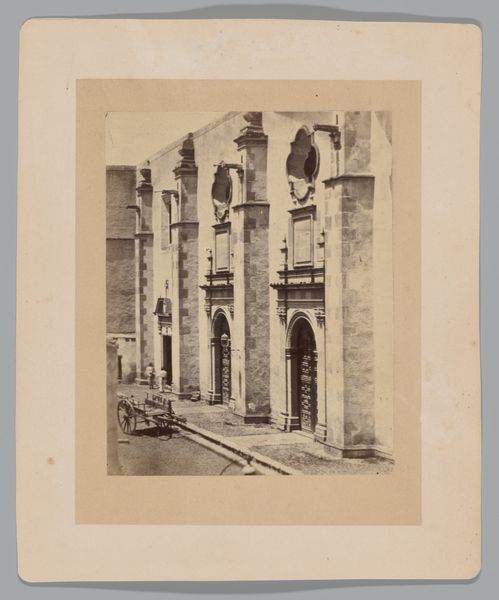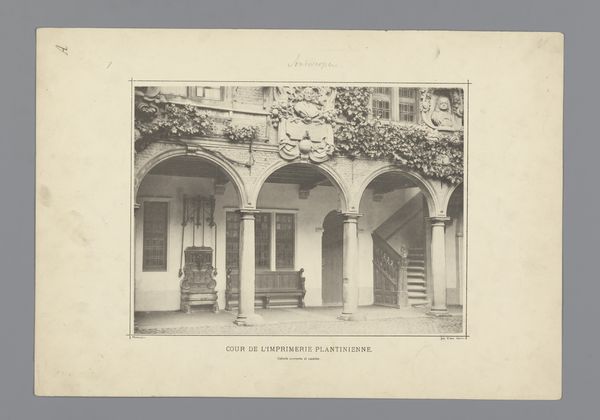
photography
#
landscape
#
photography
#
ancient-mediterranean
Dimensions: height 289 mm, width 241 mm
Copyright: Rijks Museum: Open Domain
Editor: This photograph, "Gezicht op de Sint-Jozefkapel in Glastonbury, Engeland" by Cundall & Howlett, predates 1858. The sepia tones and the decaying architecture evoke a sense of time and ruin. What particularly strikes me is the tangible texture of the stone, captured through photography. How can we examine the materiality of this representation of a ruined building? Curator: This image offers a window into the early use of photography to document architecture, moving beyond purely representational concerns. Think about the chemistry involved, the painstaking process of creating this print. The artists chose to depict a site laden with social significance: a chapel, already crumbling. What commentary do you think they're making by focusing on its degradation? Editor: Perhaps it speaks to the impermanence of even the most enduring human creations, contrasting it with the endurance of the photographic medium itself? Were these photos intended for artistic display, or primarily as documentary records? Curator: That's an insightful question. At the time, these images existed in a somewhat liminal space. Photography was employed both for documentation and to emulate painting. The soft focus and tonal range mimic artistic sensibilities, whilst the meticulous detail highlights the real labor of both the photographic production and of the long-gone masons who crafted the chapel. The question of whether the art lies in the making of the photograph, or in the social act of viewing and assigning worth to a ruined building is a point to consider. What lasting effect do you think pictures like this had? Editor: I never considered the parallel labor efforts inherent in capturing and constructing buildings! Considering photography's increasing ubiquity now, I realize it fundamentally changed our relationship with material culture. Thanks. Curator: Precisely! And the continuous questioning of these intersections only enriches our understanding.
Comments
No comments
Be the first to comment and join the conversation on the ultimate creative platform.
